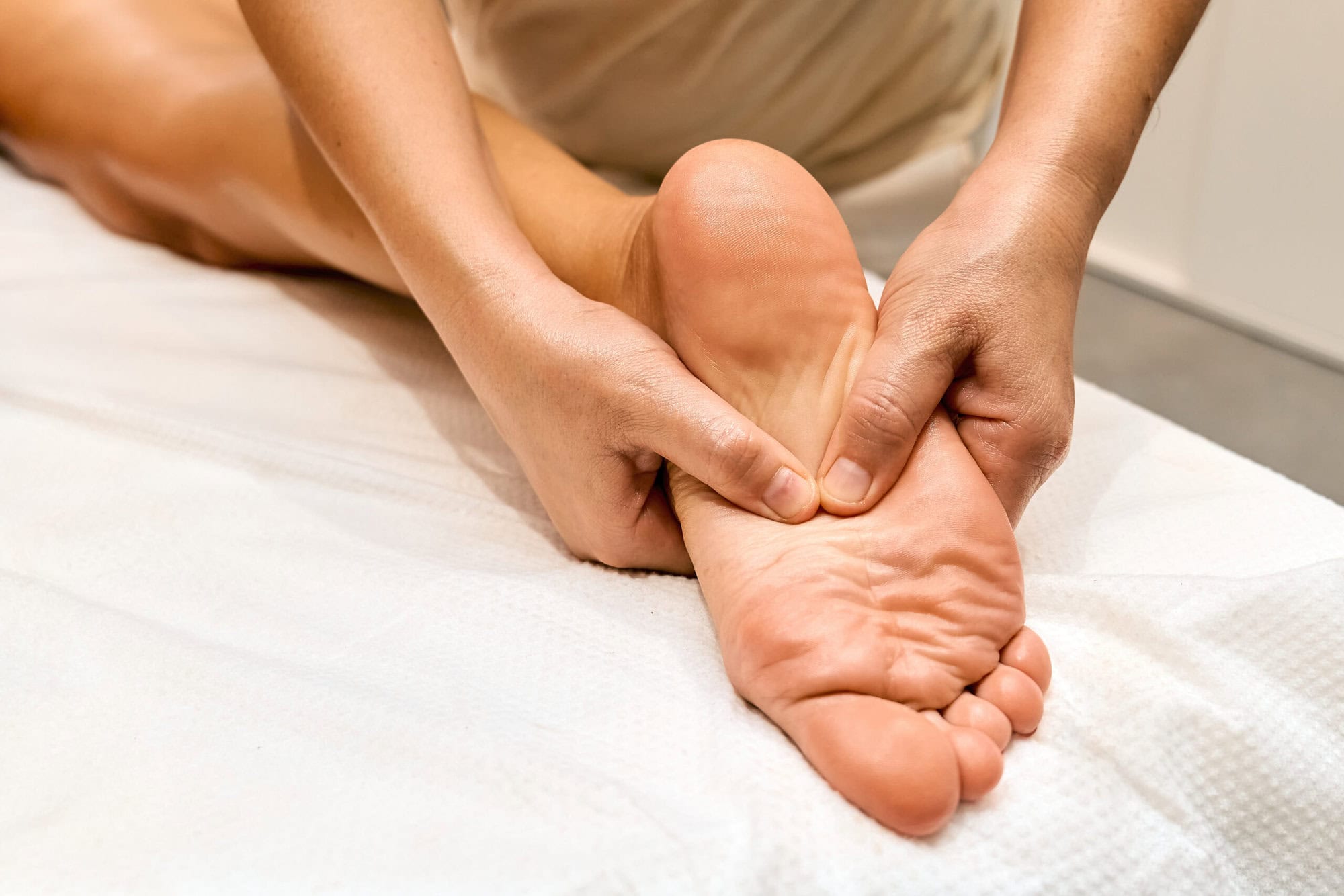Is that sharp pain near your heel keeping you off your feet? Plantar fasciitis is a common condition, especially for athletes and people who spend all day on their feet at work. If the pain feels so bad that you can’t walk, the first things to do are rest and call your provider. They can accurately diagnose your condition and offer targeted treatment options. For instance, you may need to wear a special device, like a walking boot or night splint, to help relieve your symptoms and go to physical therapy to stretch and strengthen your muscles.
Forever Fit is experienced in treating plantar fasciitis and other ailments causing foot and ankle pain. This article will discuss some of the most common physical therapy recommendations for patients with symptoms that interfere with everyday life.
4 physical therapy exercises for plantar fasciitis pain
Many plantar fasciitis patients can relieve their pain through exercise, lifestyle changes and other methods. Surgery is another option, but only about 5–10 percent of patients typically need it. Your physical therapist can offer the best recommendations for your specific case, but here are a few common PT exercises and stretches for plantar fasciitis:
-
Toe curls
Building stronger toe flexors can help minimize the strain put on the bottoms of your feet. For this exercise, you’ll need to grab a towel and do the following:
- Sit in a chair and put the towel on the floor in front of your feet.
- Scrunch your toes onto the towel, pulling it toward you across the floor.
- Release the towel.
- Repeat 10–15 times or as directed by your physical therapist.
-
Arch and calf stretches
This stretch helps create more flexible arches and legs, which can help alleviate the painful tightness in your plantar fascia. Simply do the following:
- Rest the ball of your foot on the edge of a step.
- Gently lower your heel until you feel the stretch in your calf and arch of your foot.
- Repeat this move 10 to 15 times or as directed.
-
Tennis ball rolls
This stretch can help relieve the tightness in the bottoms of your feet. For this move, grab a tennis ball and do the following:
- Sit in a chair with your feet flat on the floor.
- Place the tennis ball under your foot.
- Roll the ball back and forth for a few minutes, focusing directly on your arch.
- Repeat 10 to 12 times or as directed.
-
Arch lifts
This exercise promotes stronger arch-supporting muscles. For this stretch, make sure your toes remain on the floor (flat and uncurled):
- Sit with both feet on the floor, hip-width apart.
- Lift the arch of your foot, creating a dome shape underneath.
- Repeat 10 to 20 times or as directed.
3 PT treatments for plantar fasciitis
Along with stretches and exercises, your physical therapist may show you some taping techniques to promote good foot pronation and recommend orthotics that provide greater arch support than your regular shoes. They may also suggest a few in-office physical therapy treatments, such as:
- Manual therapy — Using several hands-on techniques, your physical therapist can help reduce the tightness in your foot and surrounding areas.
- Dry needling — Trigger-point dry needling may be effective in treating plantar fasciitis by loosening tight foot and leg muscles.
- Graston Technique® — Using a special instrument, your physical therapist can help reduce protective tension and guide tissue remodeling to relieve plantar fasciitis symptoms.
Even if your comprehensive treatment plan includes a combination of methods, it will always be tailored to your unique needs. Your provider can also adjust your recommended program if some treatments seem to be working better than others.
Common do’s and don’ts for plantar fasciitis care
If you’re prone to plantar fasciitis flare-ups, here are a few key things to keep in mind:
-
Don’t push excessively through the pain.
Pain is your body’s way of telling you there’s something wrong. Putting extended pressure on your feet may intensify your symptoms in a way that feels threatening, increasing sensitivity, especially with high-impact exercises. Plantar fasciitis can also lead to other problems in your feet, hips or knees if your gait (walking pattern) becomes altered as you try to avoid the pain.
-
Wear supportive shoes.
Supportive shoes can make a significant difference for many patients, especially people at higher risk. Even adding orthotic inserts or gel pads to your favorite pair of trainers or flats might provide some relief now and help prevent recurring issues later.
-
Don’t cut your plantar fasciitis treatment short.
Sometimes treating severe foot pain is a marathon, not a sprint. Plantar fasciitis can take anywhere from a few weeks to a few months to heal, depending on your injury, lifestyle and other factors. Whether it’s wearing a night splint or doing PT at home, be sure to take the recommended amount of time to treat your feet.
-
Discuss your symptoms with your provider.
Intermittent pain may be easier to ignore at first, but don’t wait to call your doctor or a physical therapist. A provider can help you find ways to relieve this issue before your plantar fasciitis pain becomes so intense that you have trouble walking (again).
Call Forever Fit for personalized plantar fasciitis care
Our team is here to help you take control of your foot health. Forever Fit proudly serves patients from several convenient locations across the central Maryland area. Call us today or fill out our online appointment request form to get started.

